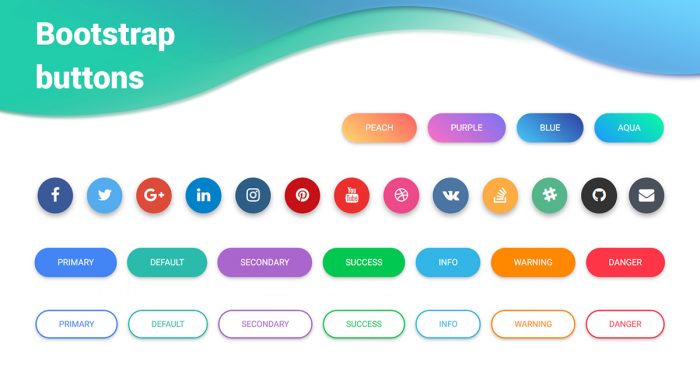Are you a blogger looking to monetize your work using affiliate marketing? Are you a retail company looking to get some new clients? Either way, whether you are the direct user of these leads or just an intermediary, the traffic you generate should be converted into leads.
At first, the tricky question will be how to generate this traffic. “Should I focus on organic traffic? Should I opt for paid advertising?”
According to Steven Smith, Digital Marketing Specialist at AustralianWritings, “Every business should focus on both organic traffic and paid advertising campaigns. These two traffic sources should coexist. You should implement a firm SEO strategy and a marketing plan for your paid advertising campaigns.”
Apart from this, the content you deliver to your audience should be highly relevant both to them and to the products you are looking to advertise. For example, delivering blog posts about the best use cases of your products or the way they ease your clients’ lives could be very effective.
Now that you know how to drive traffic, it’s time for you to convert it into qualified leads.
Here are 7 aspects you should take into consideration when creating your call-to-action.
1. Who Am I Talking to?
Like we said in the introductory paragraph, both your content and your call-to-action should be relevant to your audience. But, for you to know what’s relevant to them, you should first get to know them.
“The best and easiest way to get to know your audience are the analytics tools which you can place both on your website and on your social media channels. Google Analytics and Facebook Analytics are some of the most popular tools out there. Use them and create your first abstract personas,” concluded George Wild, CMO at Edugeeks Club.
The second method, which is more difficult to implement, but more effective, would be to offer questionnaires to your audience. As a way to make sure many people complete your questionnaires, you could give them freebies or discounts for your products.
The first questions should focus on defining your personas: age, location, studies, nationality, average income, and such aspects.
2. Is It the Right Moment?
Before we even try to answer this question, even though it doesn’t apply 100% to our case, you should definitely watch this video of Jeff Bezos, the CEO of Amazon. Keep in mind this was the year 1999. Take a look at Jeff’s current ranking in the Richest People List.
Are you done watching the video? What’s your conclusion?
Yes, the consumer-centric approach is the way people should do business in the 21st century.
With this in mind, now it’s time to answer our question. Is it the right moment to drop the call-to-action? Am I pushing it too early? Am I looking very desperate to convert?
Before you even start to drop these so-called rockets on your blog posts, make sure that your audience is convinced by the fact that your product would be very useful for them. Also, they should be convinced that your product is the best alternative for their needs.
From now on, we will call these calls-to-action rockets because they can harm you if they are fired too early, but they can also take you to the moon if they are fired at the right time.
3. Content
The way you deliver these rockets is very important and it will make a great difference in their efficiency.
You can deliver these calls-to-action as a button; this is the classic way. It’s not very effective. Across all industries it has an average conversion rate of around 3%, but it’s also the easiest way. Another effective way of delivering your calls-to-action would be through videos.
Put yourself in the shoes of your customers and pretend you are looking to buy the golf clubs you sell. You surf the web for days to find the most appropriate ones. At one time, you get to this website where you find lots of valuable information about:
- The materials the clubs are made of
- Why these materials are the most suitable choice
- How they can improve your performance
- Other aspects you should take into consideration when playing golf
Then, once you read all this information, at the end of the article you find a 20-second video with Tiger Woods taking a shot with these clubs and letting you know you could get a 10% discount if you use the code he gives you. Wouldn’t this increase the chances of you buying the golf clubs?
4. Bootstrap Much?!
We are not looking to teach you how to properly put your boots on. We are looking to show you a method for making your content more appealing.
If you already decided on using a video as a call-to-action, the following step will be useful for making it more appealing. It won’t have a very powerful impact on its conversion rate.
Even so, if you decide that you will use buttons and similar types of content, you should definitely use this library.
Bootstrap is a very modern CSS library which you should use in order to create very modern and appealing calls-to-action.
Take a look at these button templates and decide which one you like. If you haven’t done so yet, you should definitely implement Bootstrap in your blog or website.
5. Heatmaps
You’ve defined your audience, you’ve delivered lots of relevant content to them, you decided upon the type of call-to-action you want to use, and you’ve already placed the rockets on the launch pad.
Now, you should see how your audience reacts to them. Are they interested in your calls-to-action or are they just flying past them? If they manage to get your readers’ attention, are the readers acting on them? If yes, what’s the click-through-rate?
For you to research this, you should definitely use heatmaps. How does it work? Basically, you just place a script on your website’s pages and you will get statistics regarding your customers’ behavior. This information includes how often they click on your call-to-action, how much they stay on your web page, and so on.
Apart from these regular statistics, these heatmaps can also record your customers’ sessions. You can watch videos of your customers’ sessions. It shows which part of your page got their attention first, where they stayed the most, what buttons they clicked and when. After watching several such videos, you can draw some firm conclusions about your rocket’s efficiency and decide whether you should keep it or create a new one.
6. Another Type of Call-to-Action
We’ll continue our golf club example. Let’s say you don’t opt for the video call-to-action, but you’d also want something more than a dull button.
At the end of your presentation articles, you could place a simple, 2-question form which will get your readers’ attention. Here’s what it should look like:
Do you like our golf clubs?
-
-
- Yes
- Definitely
- Take my money!
-
How much would you pay for a set of our golf clubs?
-
- Less than $500
- Between $501 and $1,500
- More than $1,500
The first question is meant to be funny and engaging to your customers. One of the easiest ways to befriend someone is by joking with them and being fun.
The second one is meant to help you define your reader’s budget. According to his or her answer, you will display a relevant product: low-budget, regular or premium.
7. 2-Step Call-to-Action
It is called a 2-step call-to-action because, at first, your goal won’t be to convince your readers to buy your product, but to make your relationship a more intimate one. Only during the second step will you try to convince him or her to spend some cash.
At the end of your article, place a comment box and ask your customers for their opinion on the product you sell. Is it suitable for them? Would they like some new features to be added? Make sure they give you their email when commenting.
Then, send them an email with a company secret. If you tell someone a secret it means that you trust them and the trust level between the two of you will increase, thus the conversion chances will increase accordingly. A secret could be the fact that you are in the process of launching a new, state-of-the-art product.
Don’t forget to attach a discount coupon for all your current products and a bigger discount coupon for your to-be-launched product. Then, inside the email, just below the discount coupons, place your call-to-action, whether it is a button or a video call-to-action.
For a company, the breakpoint between traffic and leads is defining. That is the make or break place for your leads. If you’ve done a good job and your call-to-action is an effective one, you will end up with a pocket full of sunshine. If not, you will need to start the entire process all over again.
Find a Home-Based Business to Start-Up >>> Hundreds of Business Listings.
















































